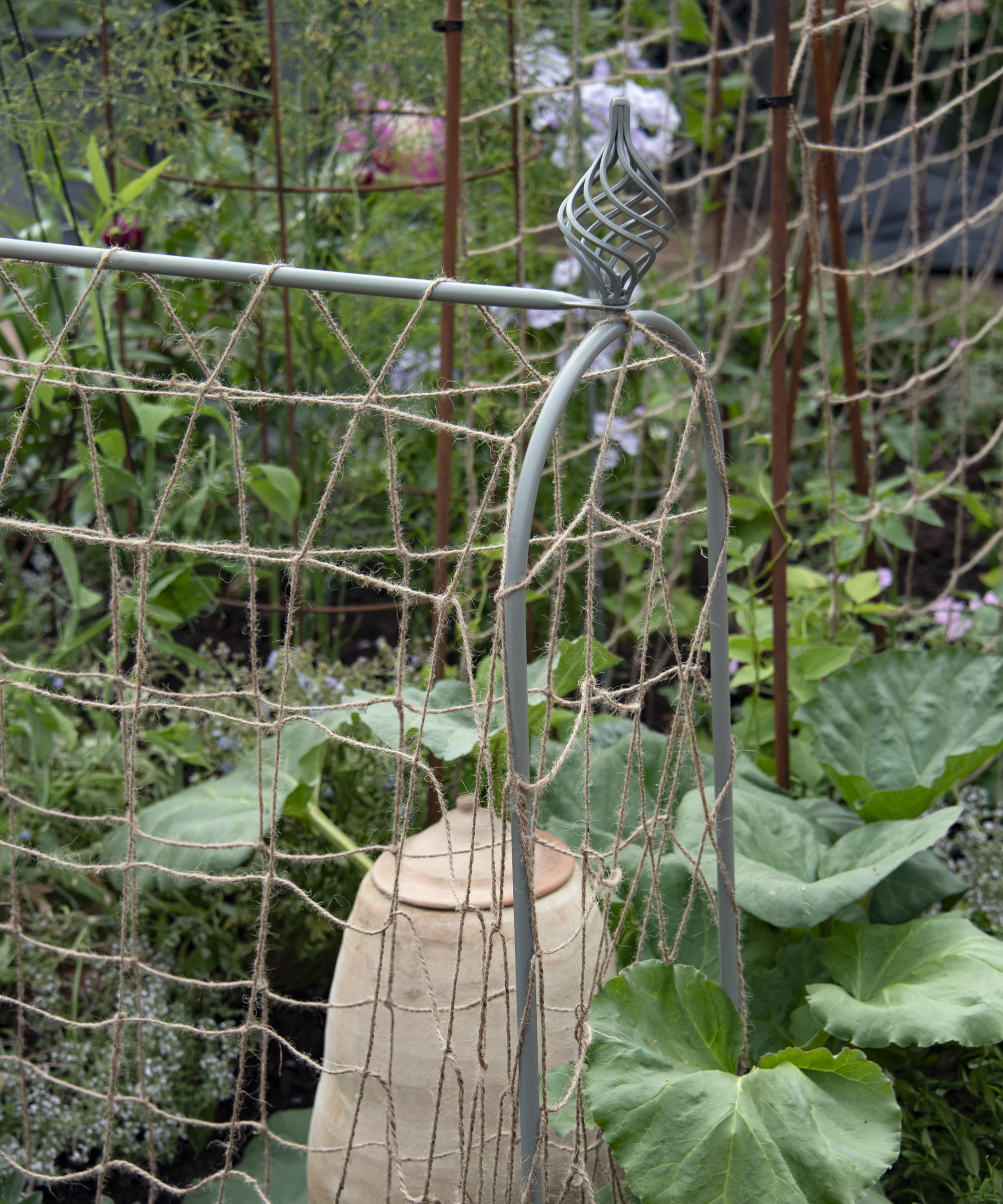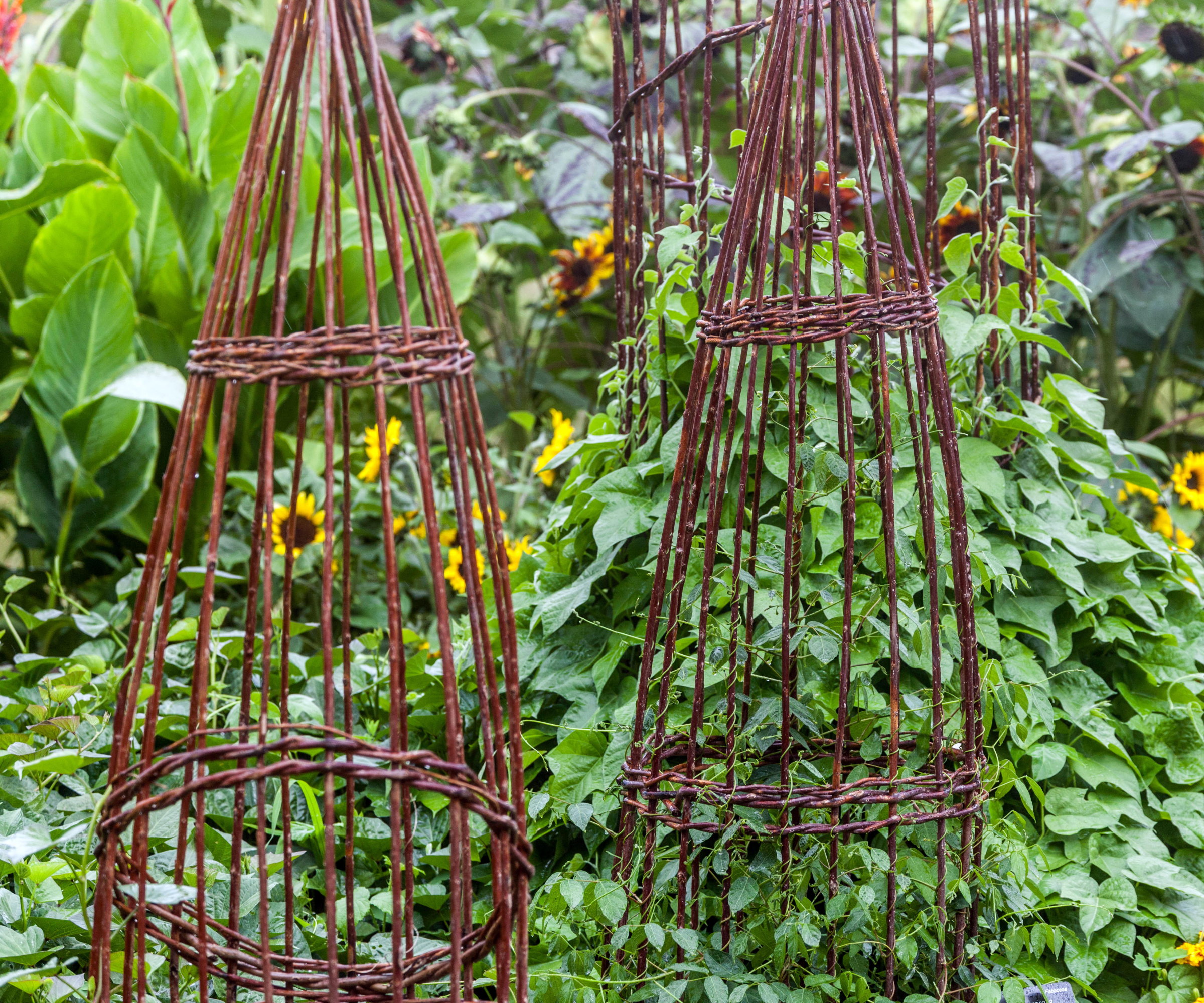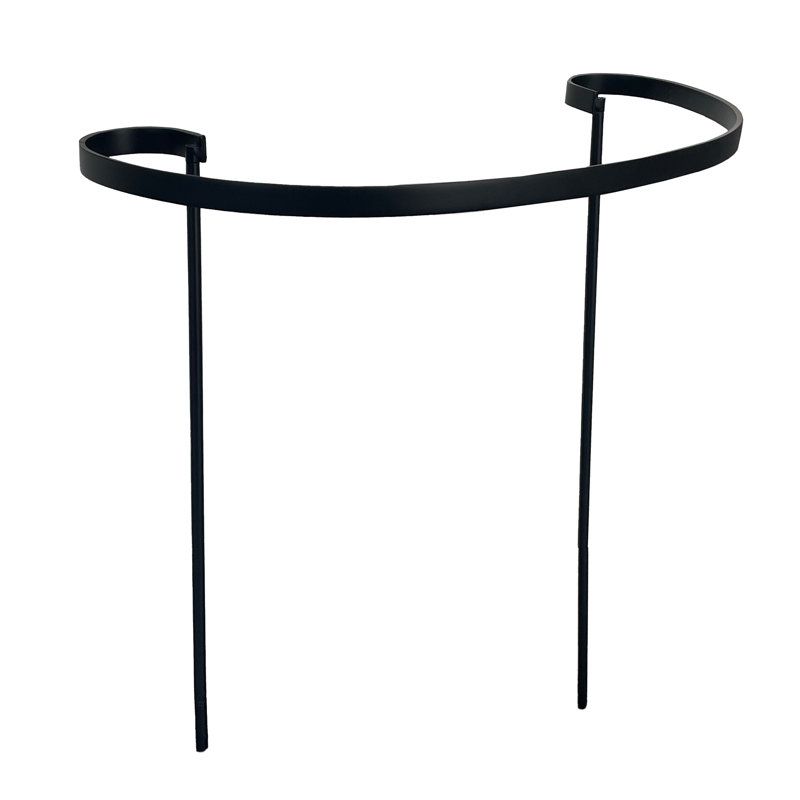Your plant supports withstand a lot throughout the season, standing out in the garden, braving the elements day in and day out. Summer sun, heavy rain, and strong winds can take their toll. But there are more reasons to clean and store them before winter than just for aesthetic reasons.
Yes, plant supports will degrade if left to withstand the worst of the winter weather. This will impact their look and lifespan. Worse than this, though, is that not cleaning them risks the health of your plants, as bacteria, fungi, or pests can overwinter on any support structures you use and leave outside year-round.
It won’t be the most glamorous job to add to your fall gardening checklist, but it is a task that all too many gardeners overlook when making steps to overwinter their garden. Take some time to clean and store away any non-permanent supports, such as trellises, cages, posts, stakes, hoops, and metal tepees, and give permanent ones some TLC to keep plants safe and extend their lifespan.
Best picks for you

(Image credit: Future/Jacky Hobbs)
Don’t forget to clean plant supports in winter – and here’s why
Very few people enjoy cleaning, but it needs to be done, and winter is an ideal time for it. Most gardeners understand the benefits of cleaning garden tools and cleaning a greenhouse at the end of each season, but I predict fewer will clean flower pots and clean plant supports in winter.
Just as dirty pots can be a breeding ground for bacteria, viruses, fungi, and pests, so can plant supports. Taking time to clean them prevents the spread of nasty pests and diseases.
1. It keeps plants healthy

The primary reason to clean plant supports in winter is that they can become contaminated with lots of nasties over the course of the gardening year.
Trellises, supports, stakes, and more are in constant contact with the garden soil and often plant material while in use, both of which can contaminate it and can be contaminated by the support.
Dennis Vong, founder of exterior cleaning company Inland Power Wash, warns of plant supports: ‘They appear innocent but pick up more unwashed stuff and vegetal debris than the average citizen predicts, and the rubbish transfers issues into the subsequent season.’
Dirty supports not only increase the risk of fungal, bacterial, or viral diseases, including powdery mildew, botrytis blight, and black spot, but they can also help pest larvae or eggs to overwinter.
As Steve Corcoran, CEO of Lawn Love, warns: ‘All of these things can negatively impact plants that come in contact with them, so you want them to not be present.’
To clean plant supports in winter, Dennis reveals the simple routine he follows: ‘Wipe the soil off, wash with light soap, and then rinse it and dry it thoroughly and then store it. It does not have to be complicated.’
 Dennis Vong
Dennis Vong
Social Links Navigation
Cleaning Expert
Dennis Vong is the founder and owner of Inland Power Wash, a family-owned exterior cleaning company servicing both homes and businesses throughout Southern California.
 Steve Corcoran
Steve Corcoran
Social Links Navigation
Lawn expert
Steve is a lawn expert and CEO of Lawn Love, a lawncare company.
2. It extends their lifespan

As they are exposed to the elements for long periods, potentially year-round for larger trellises or arches, regular cleaning and maintenance extend their lifespan. Cleaning, storing, and looking after plant supports maintains their integrity and means you don’t need to buy replacements as often.
Metal supports can rust or corrode during the winter. Wooden ones can warp, crack, or degrade due to moisture absorption or cycles of freezing and thawing during the colder months.
When it comes to leaving untouched supports outdoors, Dennis Vong warns: ‘Surfaces which remain dirty during wet months are always the ones to degrade more and propagate problems more.’
The cleaning expert advises cleaning plant supports in winter, adding, ‘The slight caution during the off-season will save a great deal of headache in later years.’
Removing and storing temporary plant supports in a clean, dry location like a shed or garage can protect them from the winter elements. Clean plant supports in winter before storing them away to ensure they are ready to use next year.
3. It keeps them looking their best

Taking time to clean plant supports in winter rewards you with better-looking backdrops for your plants. Your climbing plants will not be attached to rusted or warped trellises, and tomato plants won’t be growing in marked, degraded cages.
Plant supports can make attractive focal points as part of any garden design. They are not just practical; they can add valuable height and structure. And supports like this handcrafted wrought iron tower at Wayfair can bring artistic beauty to complement your plants.
Unattractive supports can take away from the plants, acting more like a blot on the landscape rather than a feature to enjoy. It can be quick and easy to clean and store them, and the benefits far outweigh the time and effort required.
4. It helps wildlife

(Image credit: Annaick Guitteny Photography/Future)
It has been mentioned that plant supports can be a breeding ground for diseases, but the potential harm can be wider-reaching than just your plants. Wildlife that visit your yard can also be affected by bacteria that build up on structures.
Andrew Marshall, garden designer at Go Wild Landscapes, highlights instances of bird flu throughout Europe as a prime example of how important it can be to clean garden structures. If you grow plants for birds as part of your wildlife garden ideas, it is crucial not to miss this seasonal cleaning task.
‘With recorded instances of bird flu growing around Europe, keeping bird feeders and other such structures clean has also become significantly more important now, especially for any wildlife-friendly gardeners out there,’ he says.
Andrew recommends a simple solution: ‘Trellises and other wooden structures can benefit from a scrub down with a mild vinegar solution. This seems to work fairly well at keeping mildew and moulds at bay, and is a cheap and eco-friendly option.’
 Andrew Marshall
Andrew Marshall
Social Links Navigation
Gardener
Andrew is a wildlife gardener specialising in environmentally and wildlife-friendly garden design. Andrew has developed his landscaping and design skills to incorporate a wide range of design influences whilst always incorporating a natural organic element with wildlife in mind.
Trellises are suitable for all parts of the garden, from the side of the home to a productive plot. A vegetable garden trellis can come in many forms, from simple bamboo tepees to metal arches, over which you can grow squash vertically for an attractive focal point. What is important is tailoring the type of trellis to the crop, as the likes of pumpkins or cucumbers will require stronger supports than beans or tomatoes.

This heavy-duty matte black metal plant support is 36 inches tall. Simply place it into the soil to support a wide range of plants.

These plant supports are 10 inches wide and 16 inches high and can be used to support many herbaceous perennials in flower beds and borders.

Trellis for Climbing Plants
This adjustable garden trellis is made of durable plastic-coated steel and features clips to make it easy to build and dismantle it.


Comments are closed.